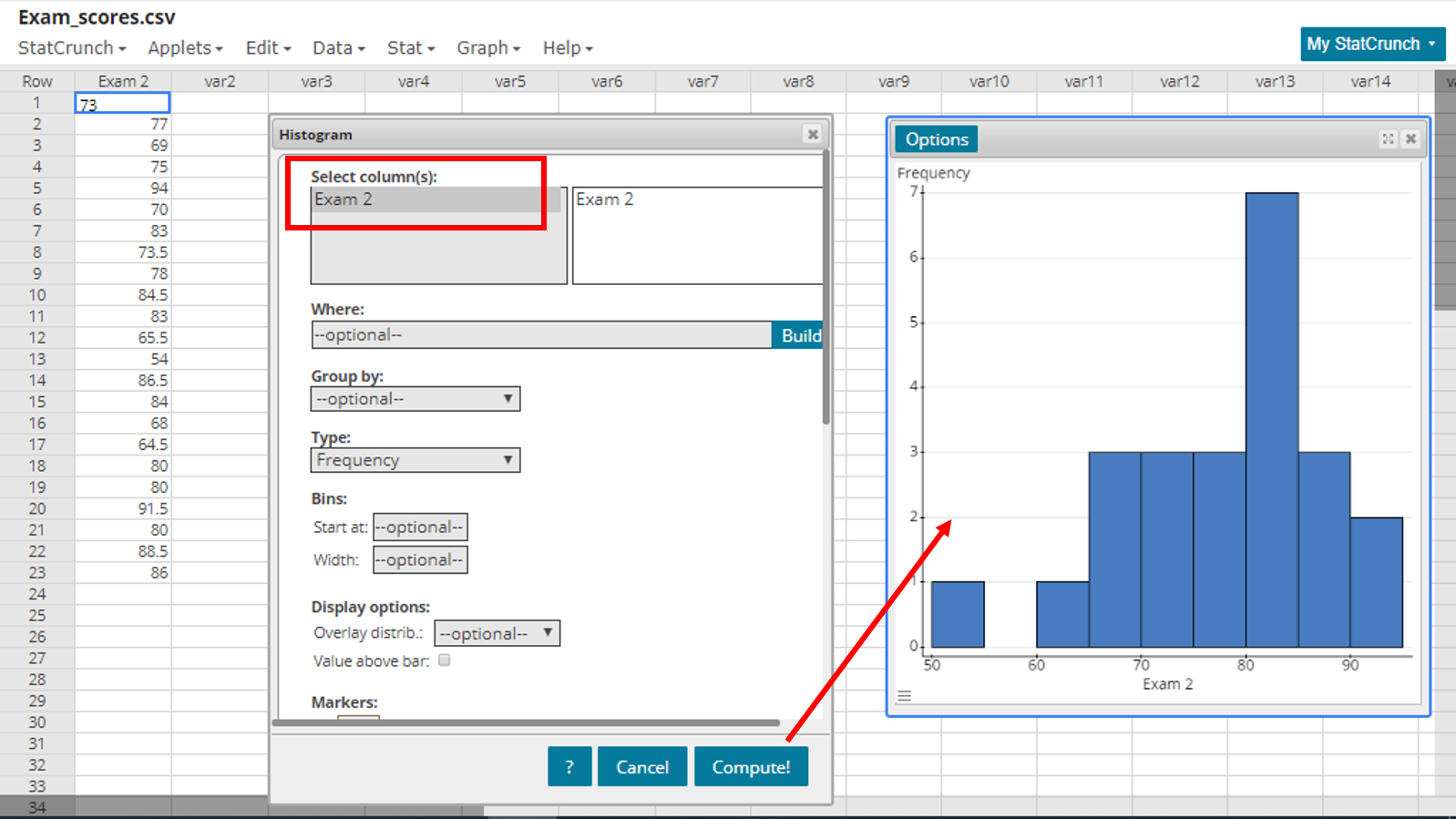
It overrides any value passed to the bins argument.
#Histogram maker for large data sets code#
In the following helper function, the var input is used to build the formula in an unevaluated R code format. To solve this, a helper function can be used. Unfortunately, the formula is rather long and mistakes can be made if used in multiple locations, because any corrections to the formula may not be propagated to all of the instances. This is possible if the resulting formula is made of basic functions that most SQL databases support and is expressed in R, so that dplyr can translate it into the proper SQL syntax. Introduce a technique that simplifies the use of complex formulas that are required to move the calculations of the plot to the databaseĪn alternative, is to use a helper R package that already implements the principles shared in this article, please see the dbplot page for more info.Īn advantage of using dplyr to convert the continuous variable into a discrete variable is that one solution can be applied to multiple database types.
#Histogram maker for large data sets how to#
The best approach is to move the data transformation to the database, and then use a graphing function to render the results.ĭemonstrate a practical implementation of the “Transform in database, plot in R” concept by showing how to visualize a categorical variable using a Bar plot, a single continuous variable using a Histogram, and two continuous variables using a Raster plot, all using data in a database This is a problem when working with a database. Displayr’s easy histogram maker is fully customizable.

Histograms are also super useful because you can determine the median of the data as well as discovering any outliers or gaps.

simulate a large number of surfaces from the. They display a large amount of data and the frequency in which the data values appear.

Plotting functions usually require that 100% of the data be passed to them. Mean predicted pollution surface for the Galicia lead pollution data. For example, geom_histogram() calculates the bin sizes and the count per bin, and then it renders the plot. Typically, a function that produces a plot in R performs the data crunching and the graphical rendering.


 0 kommentar(er)
0 kommentar(er)
